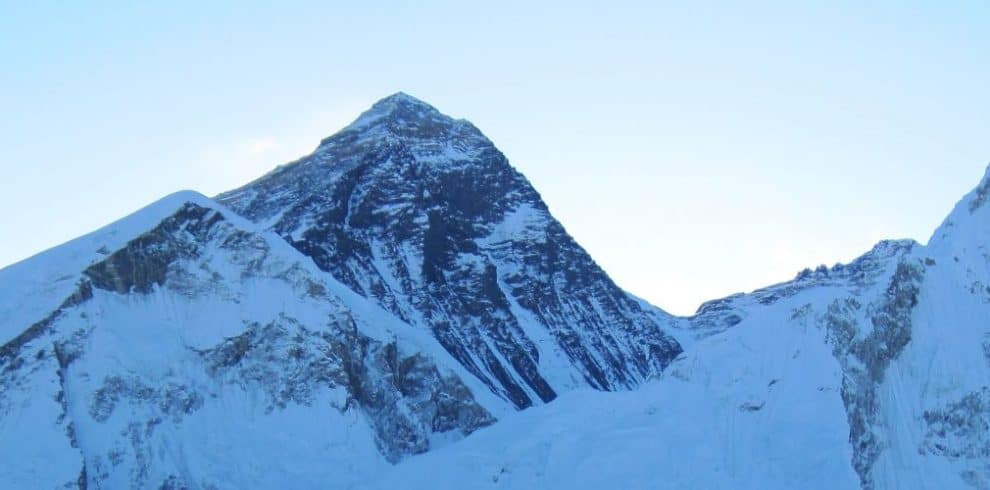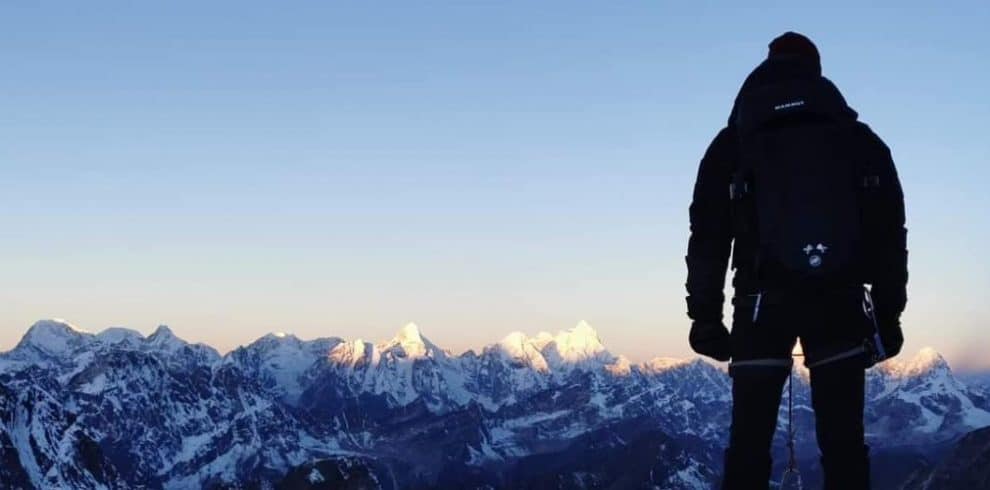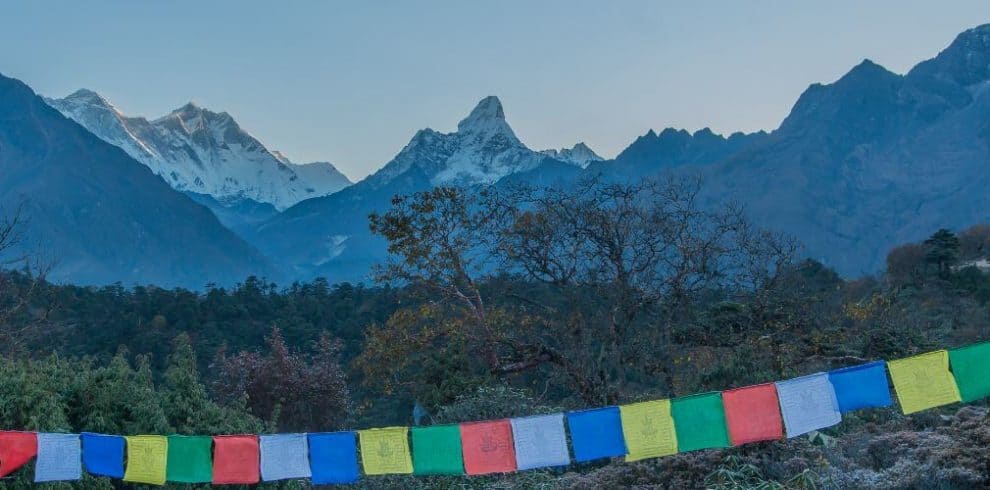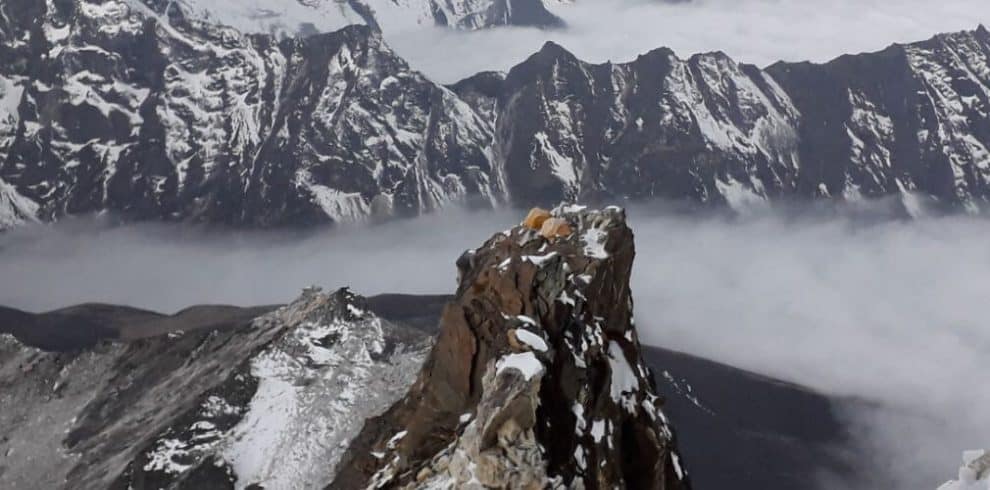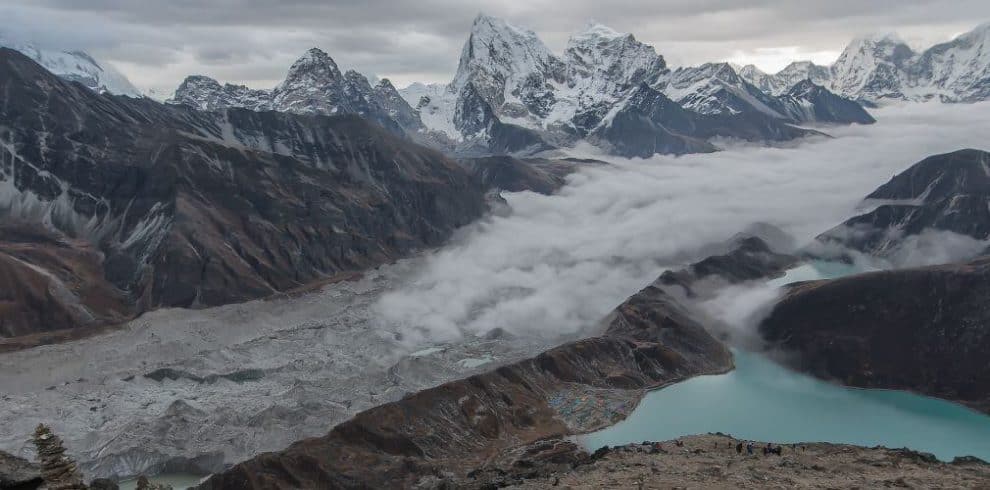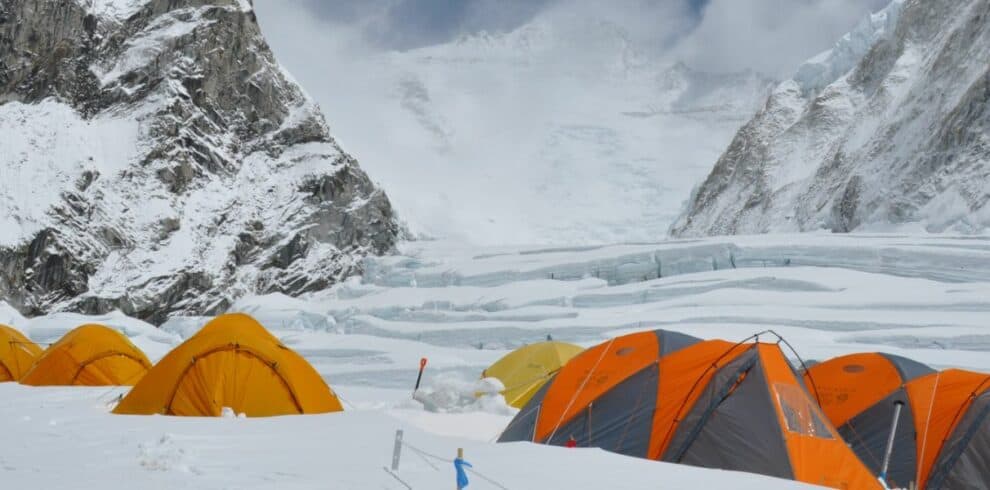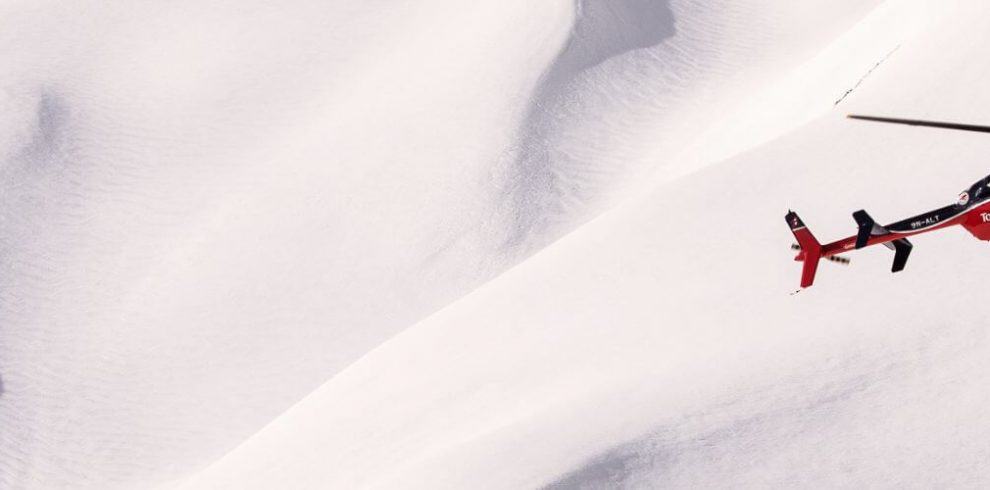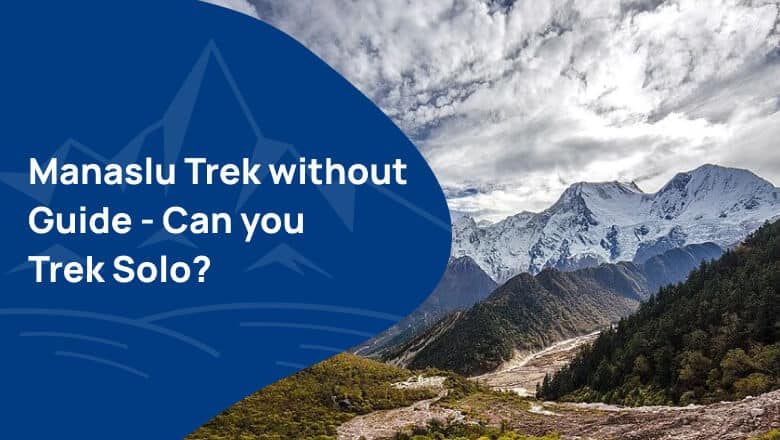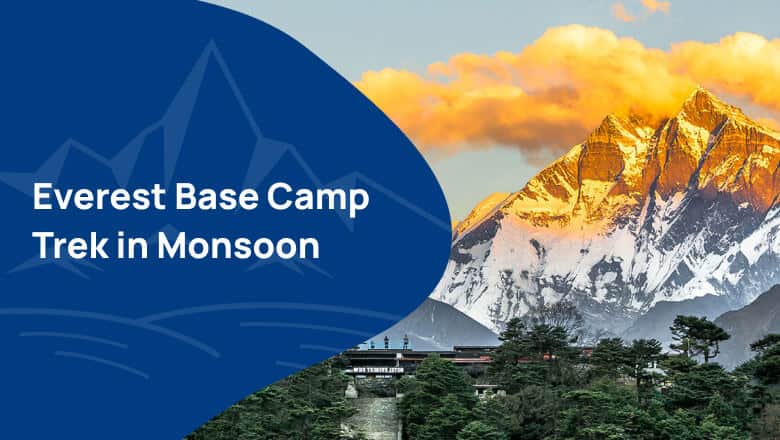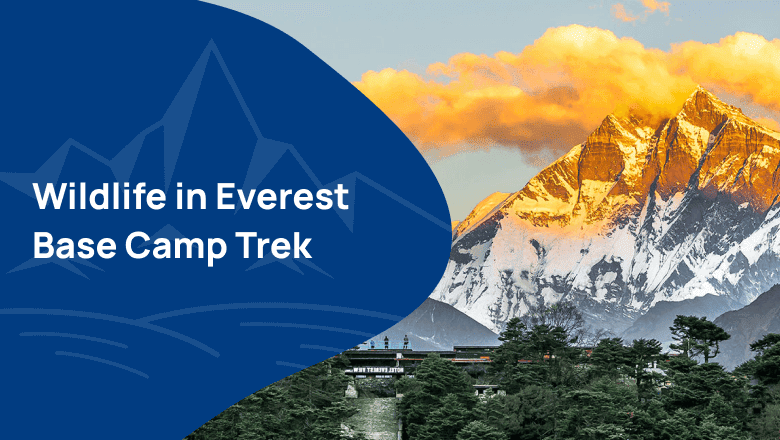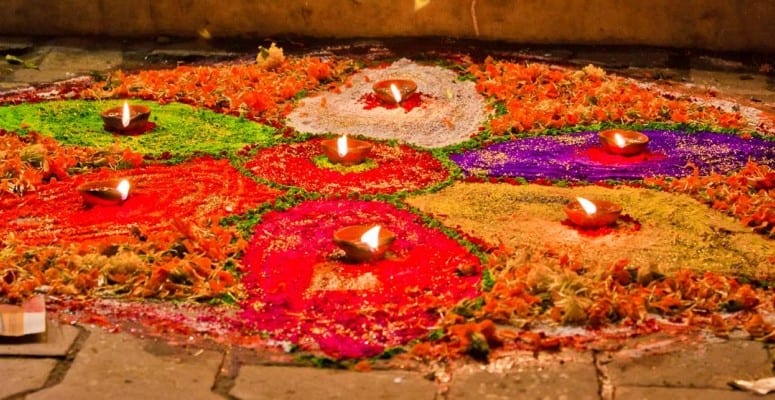Hey! If you are an adventure enthusiast, then the Everest Base Camp trek, the name itself, is enough to engulf you in the fascination of this epic journey. Additionally, being a once-in-a-lifetime experience for many adventure seekers, the journey takes you through the stunning Himalayan region and offers breathtaking views of the world’s highest peak, Mount Everest.
This incredible journey usually takes around 12 to 14 days as you hike through charming villages, lush forests, and rugged landscapes. One of the most crucial aspects to consider during this trek is food and accommodation, which significantly ensures a comfortable and enjoyable experience.
When embarking on the Everest Base Camp Trek, you can expect a unique combination of local culture and warm hospitality. Teahouses, which are the main form of accommodation along the trail, offers a cozy and comfortable place to rest and refresh after a long day of trekking. These teahouses come in a variety, from simple ones with few amenities to more upscale options equipped with facilities like hot showers and Wi-Fi.
In this article, let’s explore together the various aspects of food and lodging on the Everest Base Camp Trek. This way, you’ll be thoroughly prepared for this amazing journey. So, let’s dive in and learn more about the tea house accommodation and meals you will encounter along the Everest Base Camp trek.
Contents
Do you have any question about trip to Nepal?
Tell us about your trip to Nepal and what you expect from it. We will answer your questions in 24 hours and help you design a trip with a comfortable itinerary to meet your needs best.
Teahouse Accommodation Along the Everest Base Camp Trek
As mentioned earlier, teahouse accommodation is an essential part of the Everest Base Camp Trek, providing trekkers with a comfortable and welcoming place to rest after a long day of hiking. These small lodges are scattered along the trail, offering basic amenities and a unique cultural experience.
a. How are the Rooms?
Rooms in teahouses on the Everest Base Camp Trek prioritize functionality and comfort over luxury. While they may be simple, they provide a cozy place to rest and recover after a long day of trekking, allowing you to fully involve yourself in the unique experience and culture of the region.
The simplicity of the rooms is due to the remoteness of the region and the focus on providing essential amenities to trekkers. Here’s what you can expect from the rooms in tea houses along the trek:
- Twin beds: Rooms typically have two single beds with clean bedding, including a mattress, pillow, and blanket. It’s a good idea to bring a sleeping bag for additional warmth and comfort, especially at higher altitudes where nights can be colder.
- Limited furniture: You may find a small table, hooks, or shelves for your belongings. However, storage space is usually minimal, so it’s essential to pack efficiently and keep your gear organized.
- Shared rooms: As you climb higher on the trek, rooms may become more basic, with thinner walls and shared facilities. Sometimes, you may need to share a room with fellow trekkers, especially during peak seasons when teahouses are busy.
- Insulation and heating: Rooms in tea houses are usually not insulated, and heating is not provided in individual rooms. Most teahouses have a central common area with a stove or heater, where trekkers can gather for warmth and socializing.
- Electricity and charging facilities: Some teahouses offer charging facilities for electronic devices in the common areas, although this service might come at an additional cost. It’s a good idea to carry a power bank to ensure your devices stay charged throughout the trek.
b. What about the Toilets?
Toilets during the Everest Base Camp Trek can range from more comfortable Western-style flush toilets to more basic squat toilets depending on the location and altitude of the teahouses. As you progress along the trek, being prepared and adaptable to changing facilities is crucial for a smooth trekking experience.
Things can expect regarding toilets on the trek:
- Lower altitudes: In the lower regions of the trek, you may find Western-style flush toilets in teahouses. These toilets are more familiar to most trekkers and provide a higher level of comfort.
- Higher altitudes: As you trek higher, squat toilets become more common. These toilets may be challenging for those not familiar with using them, but they are still functional and relatively easy to use with some practice.
- Shared facilities: Toilet facilities are often shared among guests in the tea houses, so you might come across queues during peak times, such as early mornings or evenings. It’s essential to be patient and respectful of other trekkers’ needs.
- Hygiene and supplies: Toilet paper and handwashing facilities might not always be available in the toilets. It’s a good idea to bring your own toilet paper, hand sanitizer, and a small towel to maintain personal hygiene during the trek.
- Waste disposal: In some locations along the trek, there may be eco-friendly composting toilets, which help minimize the environmental impact of waste disposal in the region. Remember to follow any guidelines posted in these facilities to ensure proper use.
c. Other Amenities
While the amenities available during the Everest Base Camp Trek may be basic compared to what you might be used to, they are designed to cater to the needs of trekkers in a remote and challenging environment. Therefore, embracing these facilities and adapting to the unique conditions of the trek can lead to a more authentic and enjoyable experience.
Here’s a list of some additional amenities you may encounter:
- Shared dining area: Teahouses usually have a communal dining area where meals are served, and trekkers can socialize with each other. This space is often heated, providing a warm and comfortable environment to relax and interact with fellow trekkers.
- Wi-Fi: Limited Wi-Fi access may be available in some tea houses, especially in lower altitudes. However, the connection may be slow, and there might be an extra charge for usage. Consider purchasing a local SIM card with a data plan for better connectivity during the trek.
- Hot showers: Hot showers are available in some tea houses or lodges, usually at an additional cost. As you climb higher, hot showers may become less common, and you may need to rely on bucket showers or wet wipes for personal hygiene.
- Laundry facilities: Laundry facilities are generally not available along the trek. Packing enough clothing and consider bringing quick-dry garments that can be easily washed and dried in your room.
- Shops and stalls: Along the trek, you may come across small shops or stalls selling snacks, bottled water, and other essentials. However, it’s a good idea to carry some supplies with you, as the availability of items decreases as you trek higher.
- Medical facilities: There are limited medical facilities along the trekking trail, with some health posts or pharmacies located in larger villages. It’s crucial to carry a well-stocked first aid kit and any necessary medications with you.
Food Facilities Along the Everest Base Camp Trek
Food facilities along the amazing journey of the Everest region are designed to cater to trekkers’ nutritional needs while maintaining a sense of validity and local flavor. By understanding what to expect and making informed choices, you can enjoy a variety of meals to fuel your journey and engulf in the unique culinary experiences of the region.
a. What to eat?
Along the Everest Base Camp Trek, you will encounter various food options catering to different tastes and dietary preferences. In addition, the teahouses and lodges offer a mix of local and international cuisine, ensuring you have a wide selection of meals to choose from in order to stay energized during your journey.
The traditional Nepali dish Dal Bhat is a staple meal for many trekkers. In addition, this nutritious and filling dish consists of rice, lentil soup, and a variety of vegetable or meat curries. While it provides the necessary energy for trekking and can be found in almost every teahouse along the trekking trails of the Everest region.
Besides the local dishes, you can also enjoy various international cuisines, including pasta, noodles, momos, and rice-based meals. These options provide an alternative way to consume carbohydrates, which are crucial for sustaining energy throughout the trek. Additionally, you may savor traditional Tibetan bread and pancakes, often accompanied by honey, jam, or eggs for extra taste and energy.
Most tea houses also offer hot and cold drinks like tea, coffee, and soft beverages, ensuring trekkers stay hydrated and comfortable during their journey.
Therefore, when deciding what to eat along the Everest Base Camp Trek, focusing on maintaining a balanced diet with various food choices is crucial. This will not only help keep your energy levels up but also allow you to savor the unique culinary experiences the region has to offer.
b. Is meat available?
Meat is available along the Everest Base Camp Trek, particularly in the lower altitude regions. However, as you trek higher, the availability of meat decreases due to transportation challenges and the need for refrigeration facilities.
Since the trekking route is remote and there are no proper means to transport fresh meat to the higher altitude teahouses, the freshness and quality of meat can be a concern.
That being said, if you decide to consume meat during your trek, it is essential to exercise caution and use your judgment to determine the freshness and quality of the meat served.
Therefore, even if the meat is available along the Everest Base Camp Trek, it is generally safer and more advisable to choose vegetarian options, especially at higher altitudes, to ensure your food is fresh, hygienic, and less likely to cause any health issues during your journey.
c. Is the food served fresh?
The food served along the trekking trails is generally prepared fresh in teahouses and lodges. However, the freshness of the ingredients may vary depending on the altitude and location.
In lower altitude areas, the ingredients are more likely to be fresh due to better access to supplies and more frequent deliveries. As you climb higher, the accessibility to fresh supplies becomes more limited, which may impact the freshness of some food items, especially perishable ones like meat and dairy products.
The teahouse owners make an effort to serve freshly prepared meals using locally sourced ingredients as much as possible. They are aware of the importance of providing nutritious and hygienic food to trekkers. Vegetables and grains are usually more readily available and fresh compared to meat products, which is why considering going for vegetarian meals is often recommended, particularly at higher altitudes.
d. Water along the trek
Access to safe drinking water is essential during the trek. There are several options for obtaining water along the trekking route, but it is crucial to ensure that the water you consume is safe and clean to avoid any health issues.
Carrying a reusable water bottle to refill with clean water is a good idea as you trek. Staying well-hydrated is essential, especially at high altitudes, to maintain your physical and mental well-being during the trek. You can ensure a safe and enjoyable journey to Everest Base Camp by using the appropriate methods to treat and consume water.
- Bottled water: You can purchase bottled water at teahouses, lodges, and small shops along the trek. However, the cost of bottled water increases with altitude, and it is less environmentally friendly due to the plastic waste generated.
- Tap or stream water: Tap water or water from streams is available along the trekking route. However, it is not advisable to drink this water directly, as it may contain contaminants and pose a risk to your health.
- Purified water: Some teahouses may offer purified or filtered water for a fee. Despite the fee this water is generally considered safe for consumption.
- Treating water: To ensure that the water you consume is safe, it is recommended to treat tap or stream water using water purification tablets, a water filter, or a UV water purifier. Therefore, in order to remove or neutralize harmful bacteria, viruses, and protozoa, making the water safe for consumption, these methods are very helpful.
e. How many meals a day?
Regular, balanced meals during the trek are crucial to maintaining your energy levels and ensuring your body gets the necessary nutrients to stay healthy and strong throughout the journey.
During the trek, trekkers typically have three meals daily to maintain their energy levels and replenish the calories spent on the tough journey. These meals include breakfast, lunch, and dinner.
- Breakfast: Usually consumed at the teahouse or lodge where you stayed overnight. Generally, breakfast options include porridge, cereals, bread, eggs, and hot beverages like tea or coffee.
- Lunch: Lunch is taken at a teahouse or lodge on the way to your next destination. The midday meal often consists of dishes like noodles, pasta, sandwiches, or the traditional Nepali dish, Dal Bhat. It is essential to have a filling lunch to provide you with the necessary energy for the remaining day’s trek.
- Dinner: Dinner is served at the teahouse or lodge where you will stay for the night. This meal is typically more significant and offers various options such as Dal Bhat, soups, rice dishes, pasta, or momos. A satisfying dinner helps your body recover and regain energy for the following day’s trek.
In addition to the three main meals, it’s also a good idea to carry snacks like energy bars, nuts, and dried fruits to have during short breaks on the trek. These snacks provide an extra energy boost and help keep your hunger at bay between meals.
If you’re planning to go on the Everest Base Camp Trek but want to know more about it first, we have a detailed Everest Trekking guide that can help. It has all the information you need to know from routes to necessary permits and so on. Check it out and learn from our expertise to make your trip a success.
Popular Dishes in The Everest Base Camp Trek
The Everest Base Camp Trek offers trekkers a unique opportunity to explore and enjoy a variety of popular dishes that reflect the region’s local flavors and culinary traditions. By trying out these dishes during your trek, you can enjoy diverse flavors and gain a deeper understanding of the local cuisine.
- Dal Bhat: The combination of rice, lentils, and curries in Dal Bhat offers a well-rounded meal that caters to the nutritional needs of trekkers. The dish is widely available in teahouses and lodges along the trek and is often considered the go-to meal for its taste, affordability, and energy-boosting qualities.
- Garlic soup: Garlic soup, a comforting and warming meal, is typically served as a hot dish among trekkers and is known for its potential health benefits and role in aiding altitude acclimatization. This simple yet flavorful soup is made primarily from garlic, which is believed to help improve blood circulation and is a delicious and satisfying option to enjoy along the Everest Base Camp Trek.
- Yak meat: Yak meat is a common food option found in the higher altitude regions of the Everest Base Camp Trek. And it also offers trekkers a unique food experience and a chance to taste a traditional high-altitude food source. However, if you decide to try yak meat during your trek, make sure to consider the freshness of the meat as you trek higher along the trekking route because, due to transportation difficulties and the lack of refrigeration facilities, the quality and freshness of meat can be a concern in remote areas.
- Chinese cuisine: Chinese cuisine has a notable presence along the Everest Base Camp Trek, primarily due to its close proximity to Tibet and the influence of Tibetan culture in the region. As a result, trekkers are offered a chance to savor diverse flavors while providing a considerable meal to fuel their journey. Additionally, the availability of Chinese dishes in the region adds variety to the menu, allowing trekkers to enjoy a different culinary experience during their trek.
- Nepali cuisine: Nepali cuisine is characterized by its vibrant flavors, use of fresh ingredients, and unique combinations of herbs and spices. Along the trek you can find various traditional Nepali dishes that showcase the local culinary culture. In addition to the staple meal, Dal Bhat, other dishes like dhido (a thick porridge made from millet or buckwheat), gundruk (fermented leafy green vegetables), and selroti (a ring-shaped rice bread) are commonly available.
Cost of Food and Accommodation along the EBC Trek
The cost of food and accommodation along the Everest Base Camp Trek can vary depending on several factors, such as the season, altitude, and individual teahouses. However, it is essential to note that the prices tend to increase as you trek higher due to the remoteness and transportation challenges.
Accommodation
Teahouse accommodation typically costs between $5 to $30 per night, depending on the location and the facilities offered. In lower altitude areas, you can pay around $5 to $10 per night for a basic room.
As you climb higher, the cost may increase to $15 to $30 per night. Some teahouses may also charge extra for services such as hot showers, charging electronic devices, or using Wi-Fi.
Food
The cost of meals along the trek can range between $3 to $10 per dish. Breakfast options such as porridge, eggs, or toast are usually on the lower end of the price range, while lunch and dinner options, including pasta, rice, and noodle dishes, may cost more.
As you climb higher, the prices tend to increase due to the limited availability of resources and the transportation of goods to these remote locations. It is not uncommon for trekkers to spend around $20 to $30 per day on food.
In total, you can expect to spend approximately $25 to $60 per day on food and accommodation during the Everest Base Camp Trek. It is essential to carry enough local currency (Nepalese Rupees) with you, as ATMs and credit card facilities are not available along the trek.
Note – These costs are just estimates, and prices can fluctuate based on various factors. It is always a good idea to budget a bit extra for unforeseen expenses or to treat yourself to some well-deserved luxuries during the trek.
Food Tips during Everest Base Camp Trek
- Stay hydrated by drinking plenty of water.
- Opt for vegetarian meals, especially at higher altitudes.
- Bring your own snacks, such as energy bars, nuts, and dried fruits, for additional nutrition.
- Consume high-calorie meals to replenish energy lost during trekking.
- Avoid alcohol and caffeine, as they can contribute to dehydration.
- Carry water purification tablets or a water filter to ensure safe drinking water.
Final Say
In conclusion, the Everest Base Camp Trek offers trekkers a unique opportunity to experience the warmth of local hospitality and the flavors of regional cuisine. Teahouses and lodges along the trek ensure that trekkers have comfortable accommodations, while the diverse range of food options caters to varying tastes and preferences.
Trekkers can explore various dishes throughout the journey, from traditional Nepali meals to Chinese and Tibetan-influenced cuisines. By engaging yourself in the local culinary culture, you can better understand the region’s traditions and way of life. Furthermore, the availability of these food options not only provides essential nourishment but also adds a memorable dimension to the overall trekking experience.
When embarking on the Everest Base Camp Trek, it is essential to appreciate the cultural and culinary experiences that await you. By enjoying the wide variety of food and comfortable accommodations along the trek, you not only fuel your body for the physical challenges ahead but also create lasting memories of your journey through the majestic Himalayas.


